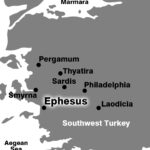By Dr. Don Bierle, FaithSearch President
The apostle Paul desired to take the Gospel to Ephesus early in his missionary tours, but was forbidden by the Holy Spirit (Acts 16:6). At the end of the second tour, He still wanted to do so and expressed, “I will return to you again if God wills” (Acts 18:21).
Evidently God did will it for he went straight to Ephesus in his third tour and after three years of teaching there, we read in Acts that “all who lived in Asia heard the word of the Lord, both Jews and Greeks” (19:10). Paul’s teaching assuredly resulted in the seven churches of Asia to be started (Revelation 2-3).
Ephesus at that time was a metropolis (200,000) which vied with Antioch of Syria as the third-largest city of the Roman world (after Rome and Alexandria). Furthermore, it was on the crossroads of major trade routes and had a harbor on the Aegean Sea, making it an extremely important commercial center.
Its Claim to Fame
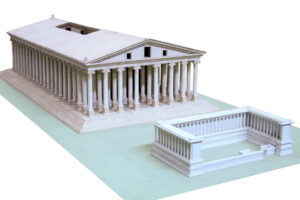
Ephesus staked its honor as “temple guardian” of the immense temple of the Artemis cult (Roman Diana). People, numbering in the hundreds of thousands, came to Ephesus to see and worship this heathen daughter of Zeus and mother of gods and men. The temple itself was regarded as one of the Seven Wonders of the Ancient World. Four times the size of the Parthenon in Athens and the largest building in the Hellenistic world, the 425-foot-long by 220-foot-wide foundation of the Artemisium supported 127 columns, each of which were seven feet in diameter and sixty feet tall. It was the only building in the world made entirely of marble, and was decorated with gold, ivory, and precious stones. The altar was a masterpiece of the sculptor Praxiteles, the Michelangelo of the ancient world in terms of quality and volume of work.
It was at this altar that the famed and unique 10-foot Artemis statue was located. Making “silver shrines of Artemis” (Acts 19:24) – souvenir miniatures of the altar and Artemis – became a lucrative commercial business.
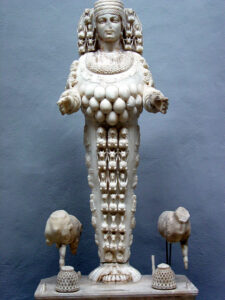
The Silversmith Riot
This is the setting for the longest and most suspenseful of all the accounts recorded in Acts (19:23-41). Paul had persuasively taught that “gods made with hands are no gods at all” (v. 26). The silversmith Demetrius aroused the city with fear:
And not only is there danger that this trade of ours fall into disrepute, but also that the temple of the great goddess Artemis be regarded as worthless and that she whom all of Asia and the world worship should even be dethroned from her magnificence (v. 27).
Clearly, Paul’s teaching had touched multiple nerves of Ephesus (religious, social, and economic). The resulting riot gathered people in the 25,000-seat theater, shouting for two hours, “Great is Artemis of the Ephesians” (v. 34).
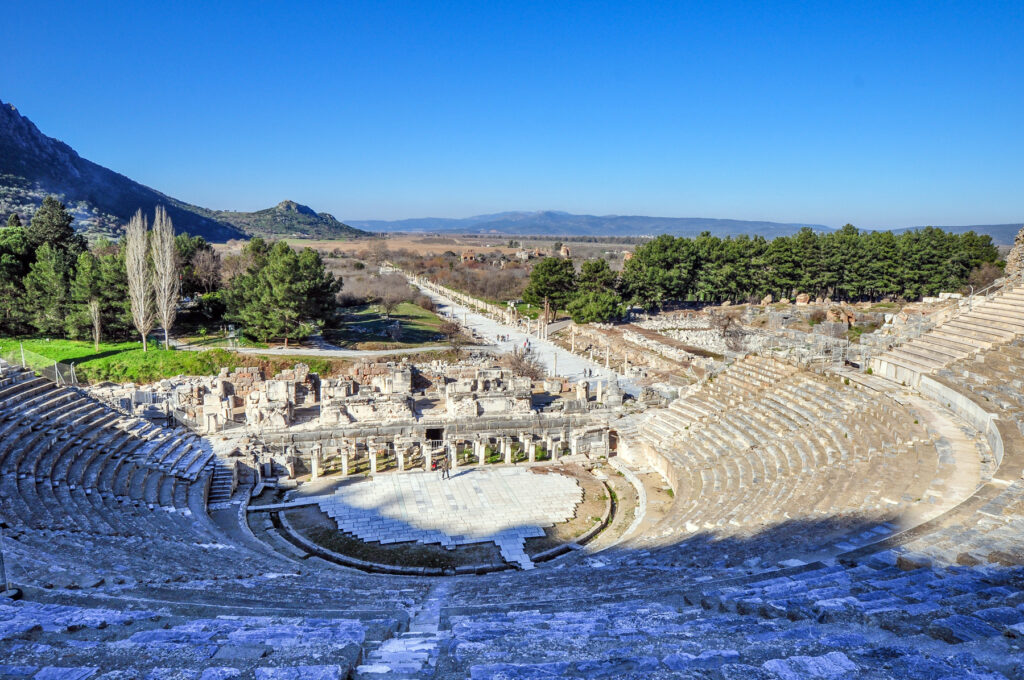
Is This Reliable History?
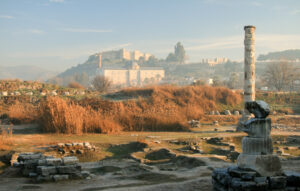
- In 1984, a monument was excavated that contained a sixteen-line inscription from the late second century which confirmed that a full century after Paul was in Ephesus, the silversmith guild still flourished.
- A half century after Paul’s time in Ephesus, Ignatius of Antioch wrote to the Ephesian believers: “…forasmuch as ye are stones of a temple… ye are all companions in the way, carrying your God and your shrine, your Christ…” (Epistle of Ignatius to the Ephesians 9:1; Emphasis added). As members (“stones”) of the church (“temple,” Greek naos), they were a contrast to the temple of Artemis (Greek naos, Acts 19:24). Furthermore, the “shrine” they carried was not of Artemis, but of Jesus Christ.
- The officials of the province of Asia are identified in v. 31 as “Asiarchs.” This word occurs nowhere else in the Bible and was thought an invention of Luke. Archaeologists have since discovered more than a dozen inscriptions from Ephesus and beyond that confirms the title.
- Ephesus was in a “senatorial province,” considered secure and peaceful and thus governed by a proconsul (in contrast, Palestine was not). Luke correctly identifies him as such (Greek “anthupatos,” v. 38).
- Some eighteen historical references and terms occur in Acts 19:23-40. All of these are repeated and reported in the archaeological or inscriptional remains of Ephesus.
Author James Edwards concluded his research by stating his confidence that “Luke knew what he was talking about in recording the riot in the theater,” substantiating his claim of having “investigated everything accurately” (Luke 1:3). Furthermore, he stated, “The archaeological and inscriptional remains at Ephesus allow modern readers to appreciate the credibility with which Luke’s account would have been read by first-century citizens of Ephesus and Roman Asia.”
Praise God that the integrity and historical reliability of the New Testament is affirmed again and again by unbiased manuscript and archaeological discoveries, such as these in Ephesus!
Sources: James R. Edwards, “Archaeology Gives New Reality to Paul’s Ephesus Riot,” Biblical Archaeology Review 42:4 (2016), 24-32, 62. Ama Abrahams Blog, “The Temple of Artemis at Ephesus: One of the seven wonders of the ancient world,” Encounters Travel, July 17, 2023, retrieved September 5, 2024.

